This answer doesn't work in every single case, but it seems good enough for situations where the points don't vary too wildly.
My idea is to start at the grid corners and work our way along the outside diagonals of the matrix, trying to "grab" the nearest points that seem like they fit into the grid-points based any surrounding points we've already captured.

You will need to provide:
- The number of rows (
rows) and columns (cols) in the grid.
- Your data points
P arranged in a N x 2 array, rescaled to the unit square on [0,1] x [0,1]. (I assume the you can do this through visual inspection of the corner points of your original data.)
- A weight parameter
edge_weight to tell the algorithm how much the border points should be attracted to the grid border. Some tests show that 3-5 or so are good values.
The code, with a test case included:
%// input parameters
rows = 11;
cols = 11;
edge_weight = 4;
%// function for getting squared errors between the points list P and a specific point pt
getErr =@(P,pt) sqrt( sum( bsxfun(@minus,P,pt(:)').^2, 2 ) ); %'
output_grid = zeros(rows,cols,2); %// output grid matrix
check_grid = zeros(rows,cols); %// matrix flagging the gridpoints we have covered
[ROW,COL] = meshgrid(... %// coordinate points of an "ideal grid"
linspace(0,1,rows),...
linspace(0,1,cols));
%// create a test case
G = [ROW(:),COL(:)]; %// the actual grid-points
noise_factor = 0.35; %// noise radius allowed
rn = noise_factor/rows;
cn = noise_factor/cols;
row_noise = -rn + 2*rn*rand(numel(ROW),1);
col_noise = -cn + 2*cn*rand(numel(ROW),1);
P = G + [row_noise,col_noise]; %// add noise to get points
%// MAIN LOOP
d = 0;
while ~isempty(P) %// while points remain...
d = d+1; %// increase diagonal depth (d=1 are the outer corners)
for ii = max(d-rows+1,1):min(d,rows)%// for every row number i...
i = ii;
j = d-i+1; %// on the dth diagonal, we have d=i+j-1
for c = 1:4 %// repeat for all 4 corners
if i<rows & j<cols & ~check_grid(i,j) %// check for out-of-bounds/repetitions
check_grid(i,j) = true; %// flag gridpoint
current_gridpoint = [ROW(i,j),COL(i,j)];
%// get error between all remaining points and the next gridpoint's neighbours
if i>1
errI = getErr(P,output_grid(i-1,j,:));
else
errI = edge_weight*getErr(P,current_gridpoint);
end
if check_grid(i+1,j)
errI = errI + edge_weight*getErr(P,current_gridpoint);
end
if j>1
errJ = getErr(P,output_grid(i,j-1,:));
else
errJ = edge_weight*getErr(P,current_gridpoint);
end
if check_grid(i,j+1)
errJ = errJ + edge_weight*getErr(P,current_gridpoint);
end
err = errI.^2 + errJ.^2;
%// find the point with minimal error, add it to the grid,
%// and delete it from the points list
[~,idx] = min(err);
output_grid(i,j,:) = permute( P(idx,:), [1 3 2] );
P(idx,:) = [];
end
%// rotate the grid 90 degrees and repeat for next corner
output_grid = cat(3, rot90(output_grid(:,:,1)), rot90(output_grid(:,:,2)));
check_grid = rot90(check_grid);
ROW = rot90(ROW);
COL = rot90(COL);
end
end
end
Code for plotting the resulting points with edges:
%// plotting code
figure(1); clf; hold on;
axis([-0.1 1.1 -0.1 1.1])
for i = 1:size(output_grid,1)
for j = 1:size(output_grid,2)
scatter(output_grid(i,j,1),output_grid(i,j,2),'b')
if i < size(output_grid,1)
plot( [output_grid(i,j,1),output_grid(i+1,j,1)],...
[output_grid(i,j,2),output_grid(i+1,j,2)],...
'r');
end
if j < size(output_grid,2)
plot( [output_grid(i,j,1),output_grid(i,j+1,1)],...
[output_grid(i,j,2),output_grid(i,j+1,2)],...
'r');
end
end
end
